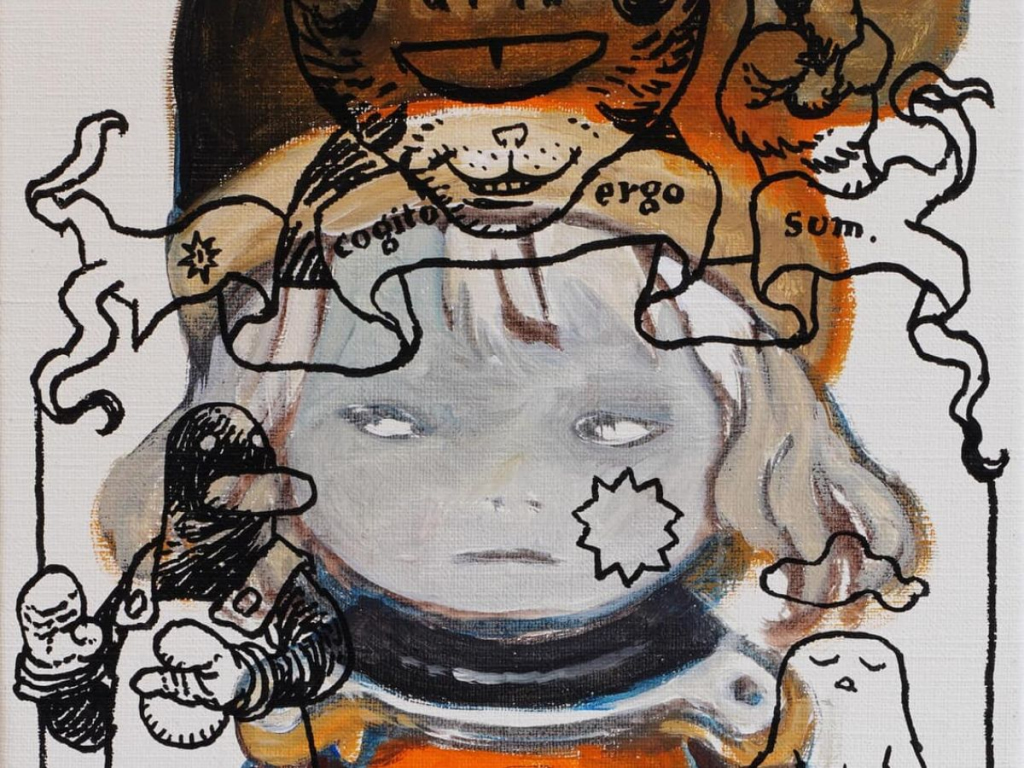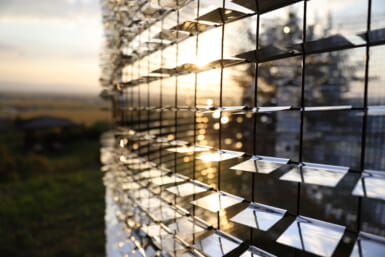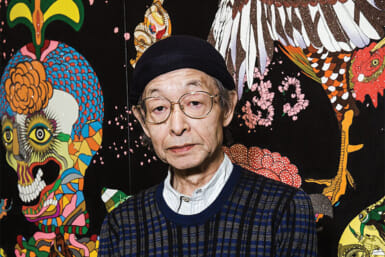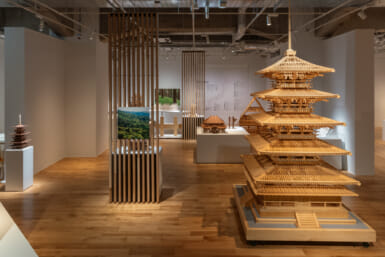While we may have passed the hottest point of the year, September is still sweltering and it’s good to take advantage of Tokyo’s indoor recreations before heading out for the autumn leaves. Here are some of the best exhibitions in Tokyo this month – all featuring contemporary Japanese artists.
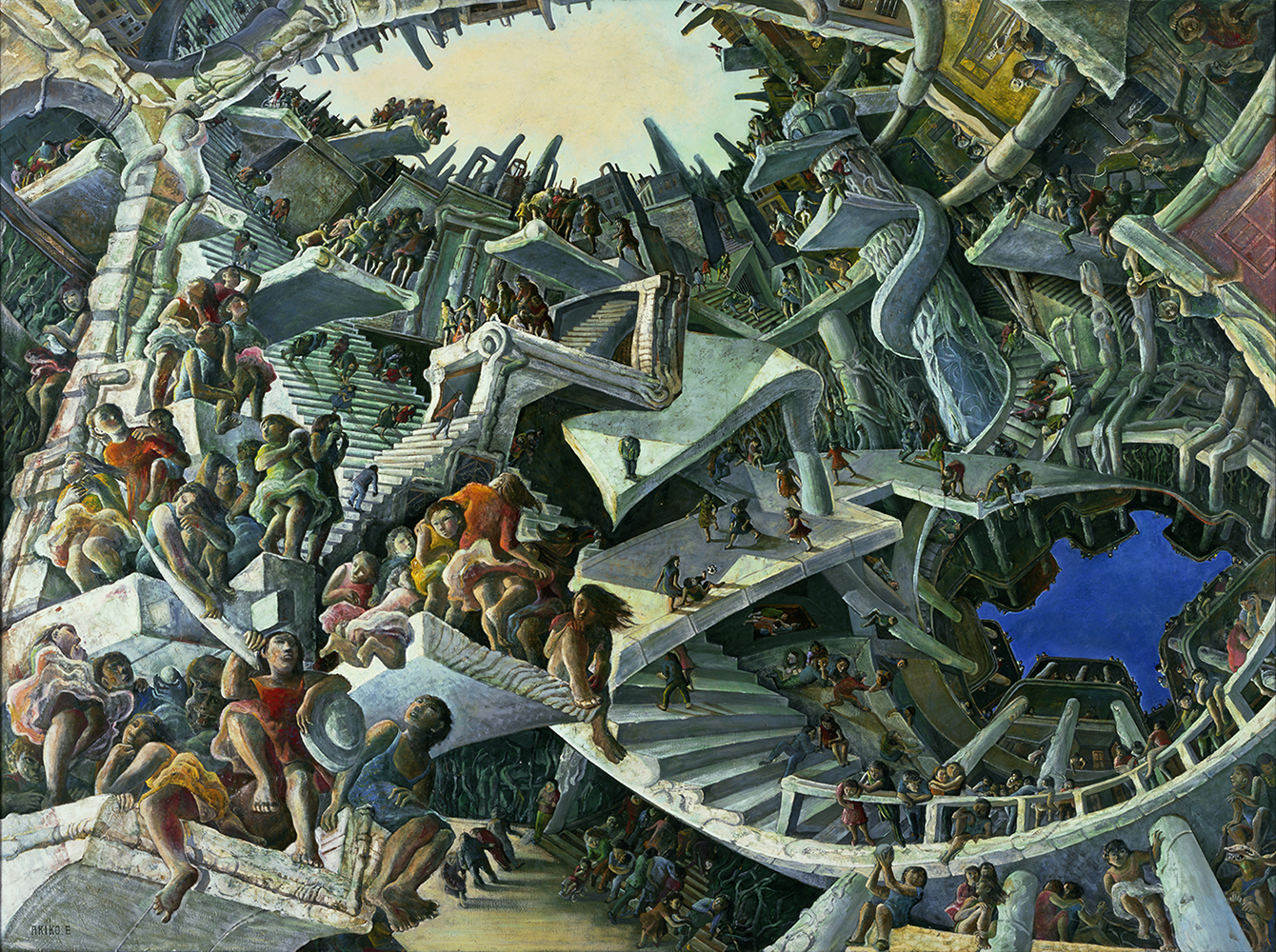
Akiko Endo, Looking Up at the Sky, 1989, Sagamihara City
1. Akiko Endo: Telling Stories
Born in Nakano and based in Sagamihara, Akiko Endo’s canvases only got bigger as time went on. They also became busier with more of an epic feel. Her debut painting series Paradise from the 1970s featured lush, flattened, perhaps Kahlo or Rivera-esque compositions of animals, plants and people cavorting (done after her move from busy Tokyo to the relatively rural Sagamihara).
In the next series Street she started experimenting with more complex perspectives and recessive effects in her painstaking articulation of bizarre buildings – environments opposite to those in Paradise. Then Endo began to make 500-, 1000-, and 1500-gauge paintings. These canvases filled up walls and rooms and were filled with action: melting stairs, mounds of clouds, shadow dogs, a great tidal wave, a giant octopus and endless circuses.
Here we get to see several works from each period of her career and several of her new ones.
When: Until Dec 12
Where: The Hiratsuka Museum of Art, 1-3-3 Nishiyahata, Hiratsuka-shi, Kanagawa
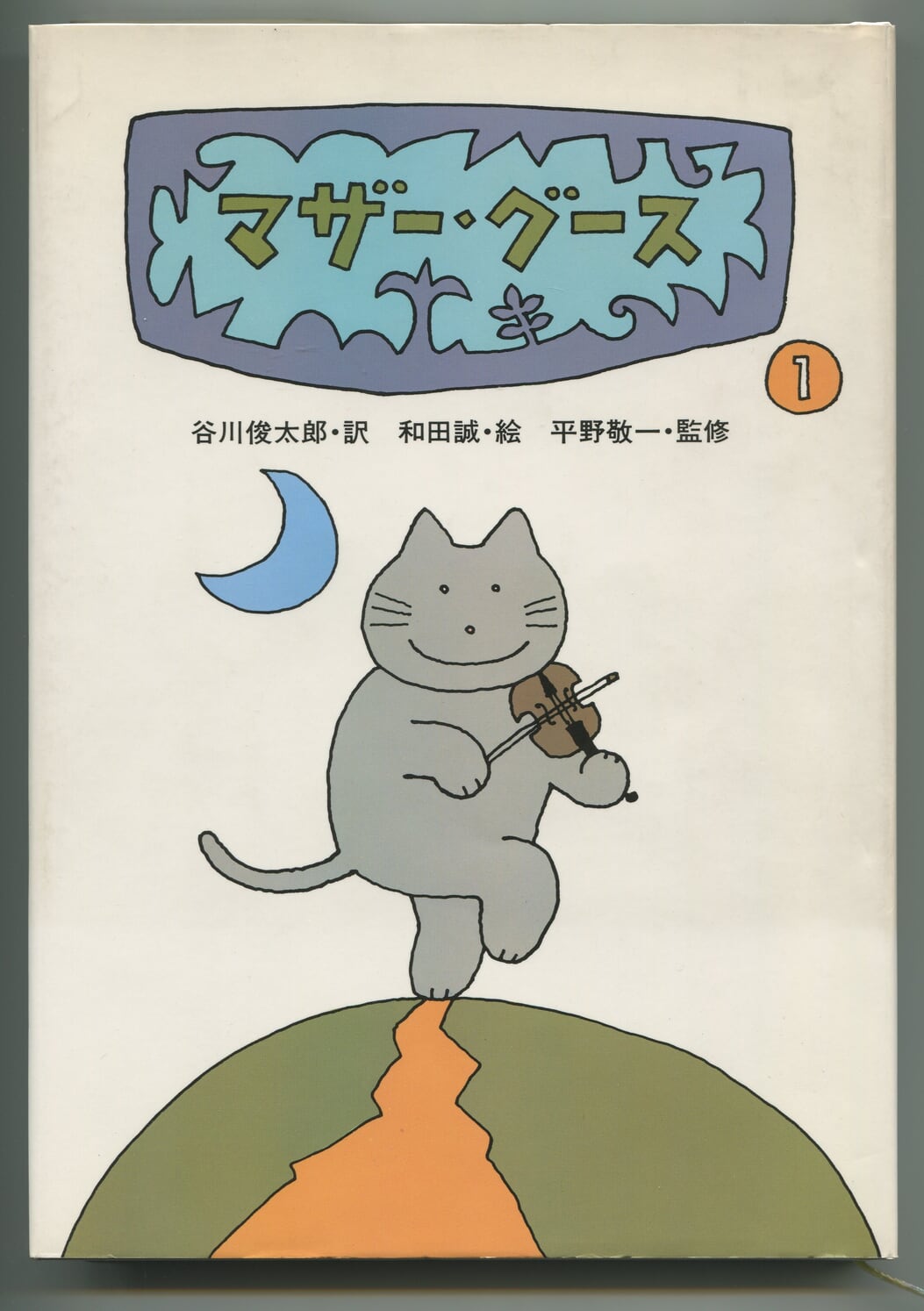
Makoto Wada, Mother Goose 1 Cover, translated by Shuntaro Tanikawa, 1984, Kodansha
2. Wada Makoto
Makoto Wada, who died in 2019, helped define Japan’s postwar graphic design boom. He was a film director, essayist, animator, editor and writer. This exhibition, with over 1,000 works and materials, reflects the great breadth and quantity of his life’s work.
It’s an unprecedented opportunity to see a side of the artist that was virtually unknown to the public. Points of interest include portraits of his friends, his picture books, animation, feature films, album covers and his collaborations with famous creatives like Haruki Murakami and Kyu Sakamoto.
When: Until Dec 19
Where: Tokyo Opera City Art Gallery, 3-20-2 Nishi-shinjuku, Shinjuku-ku
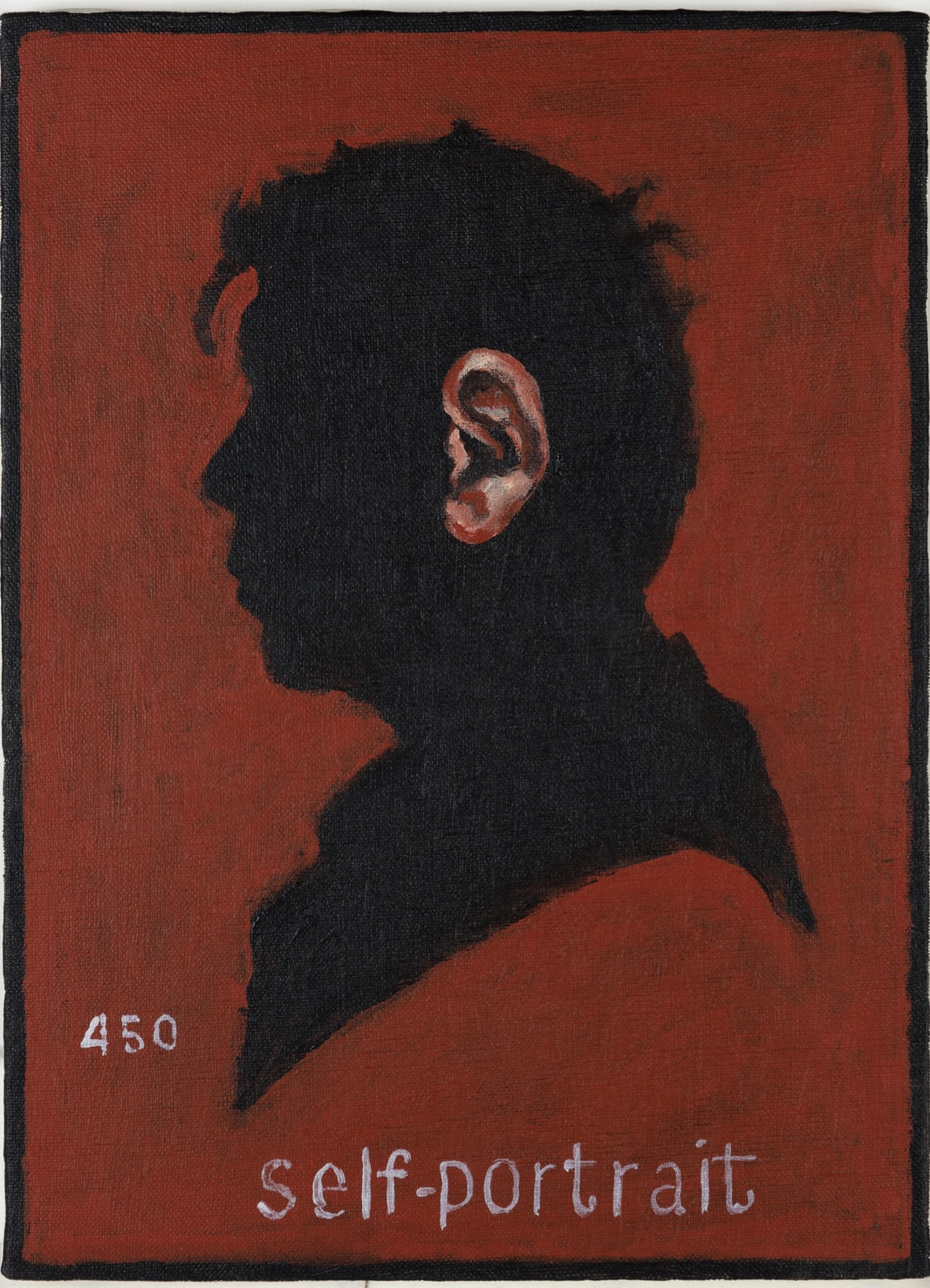
Self-portrait of Tadanori Yokoo, Artist, 2014
3. Yokoo Tadanori: The Artists
Tadanori Yokoo was one of the defining characters of postwar Japanese culture. “New art is not born in a state of stability,” he fittingly said. We get the feeling that his posters, despite their clean lines and mathematically precise compositions are always undulating or flowing outside of the margins. A similar instability can be seen in his paintings.
The Fondation Cartier pour l’art contemporain asked Yokoo to paint 139 portraits of various artists, philosophers and scientists that essentially shaped the museum in some way. This exhibition showcases them. There is no doubt you will recognize many of the sitters: Jean-Paul Gaultier, Takeshi Kitano, Issey Miyake, as well as many visual artists like Junya Ishigami and Agnes Varda. It’s interesting to see how their heads are toyed with and given characteristic colors. At times body parts are dismembered. Their printed names also become essential parts of the composition and “character study.” Not only does the artist “destabilize” the portrait, but he also treads the line between graphics and painting.
When: Until Oct 17
Where: 21 21 Design Sight Gallery 3, 9-7-6 Akasaka, Minato-ku
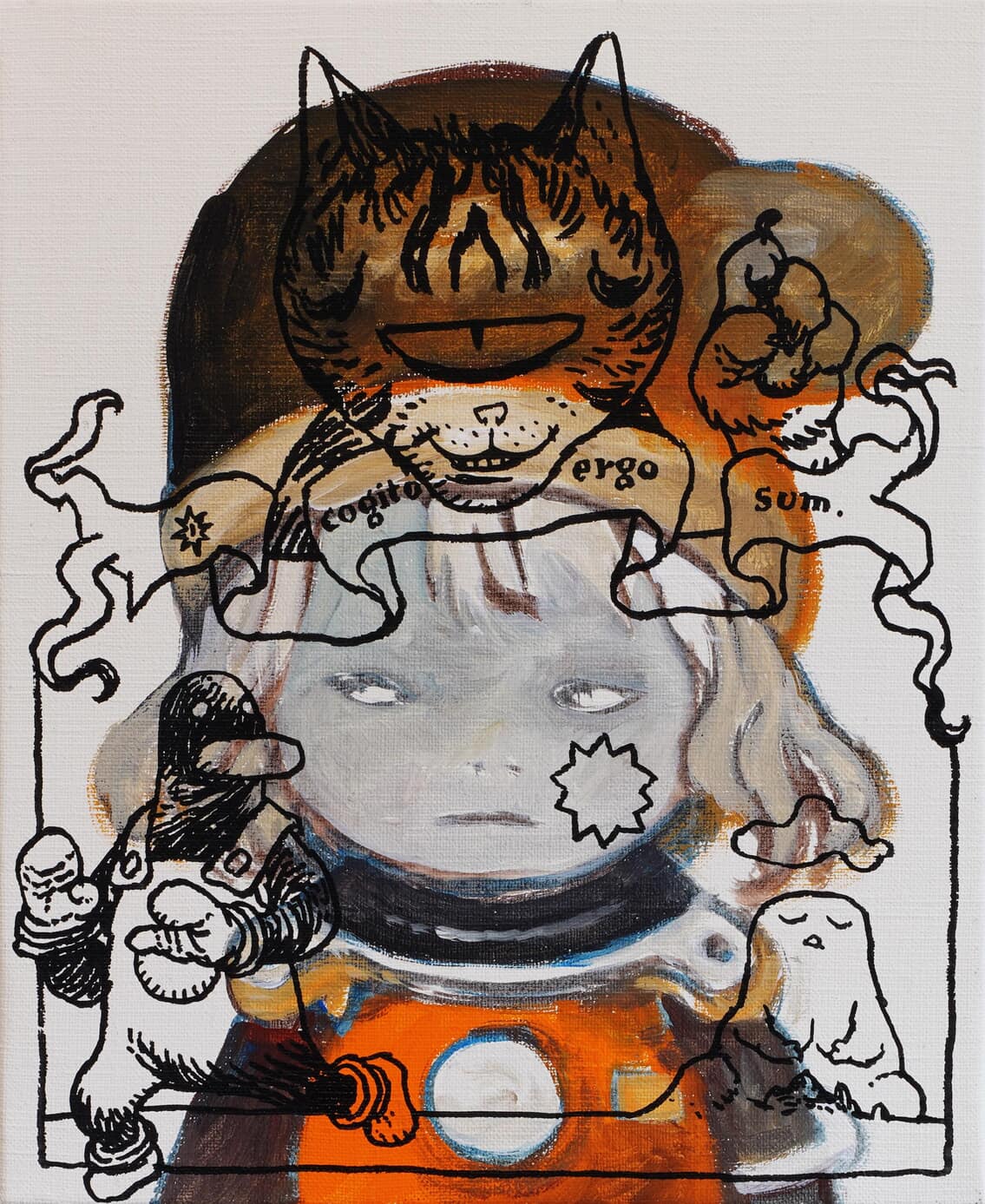
©️Katsuya Terada
4. Katsuya Terada: MONSTER HEAD GIRL
So much of the thought and aesthetic of Takashi Murakami’s Hidari Zingaro and Kaikai Kiki Gallery revolves around manga. And most Japanese manga, says Katsuya Terada, is character driven. Such is true for Terada’s work. His eponymous doll-like “monster head girls” are instantly recognizable and so consistent and spirited that we assume they occupy the same universe.
The narrative flow of the manga, Terada continues, is created by its crucial borders. He wishes to capture these characteristics of a propelling story in a single picture. But this solo exhibition will focus less heavily on two-dimensional works than his previous ones, featuring new bronze sculptures of his characters – 3D articulations of his line drawing.
When: Until Sept 17
Where: Hidari Zingaro, 5-52-15 Nakano, Nakano-ku
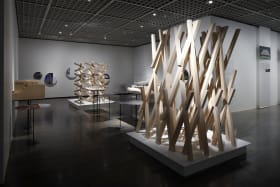
©Kioku Keizo Courtesy of The National Museum of Modern Art, Tokyo, Installation view|Japan Cultural Expo Presented and Co-presented Projects
5. Kuma Kengo: Five Purr-fect Points for a New Public Space
During the pandemic, architect Kengo Kuma thought about the box structure of our society, both from a physical and abstract perspective. This included the box-shaped buildings that promote divide, restrictive box structures in education and work life as well as the construction industry’s clutch on urban space (those blocky concrete or steel structures). For him, the importance of building design lies in how we experience architecture.
That is a key component of this exhibition. Museum-goers get to experience his designs in a an immersive way through videos, including a 4K installation with music by Ryuichi Sakamoto and a 360-degree VR simulation. Furthermore, you will see the records of a research project in the movements of cats through Tokyo. There’s also documentary interviews with Kuma’s colleagues and a special display about the Japan National Stadium, which has been the main venue for the 2020 Tokyo Olympic and Paralympic Games.
When: Until Sept 26
Where: The National Museum of Modern Art, Tokyo, 3-1 Kitanomaru-koen, Chiyoda-ku
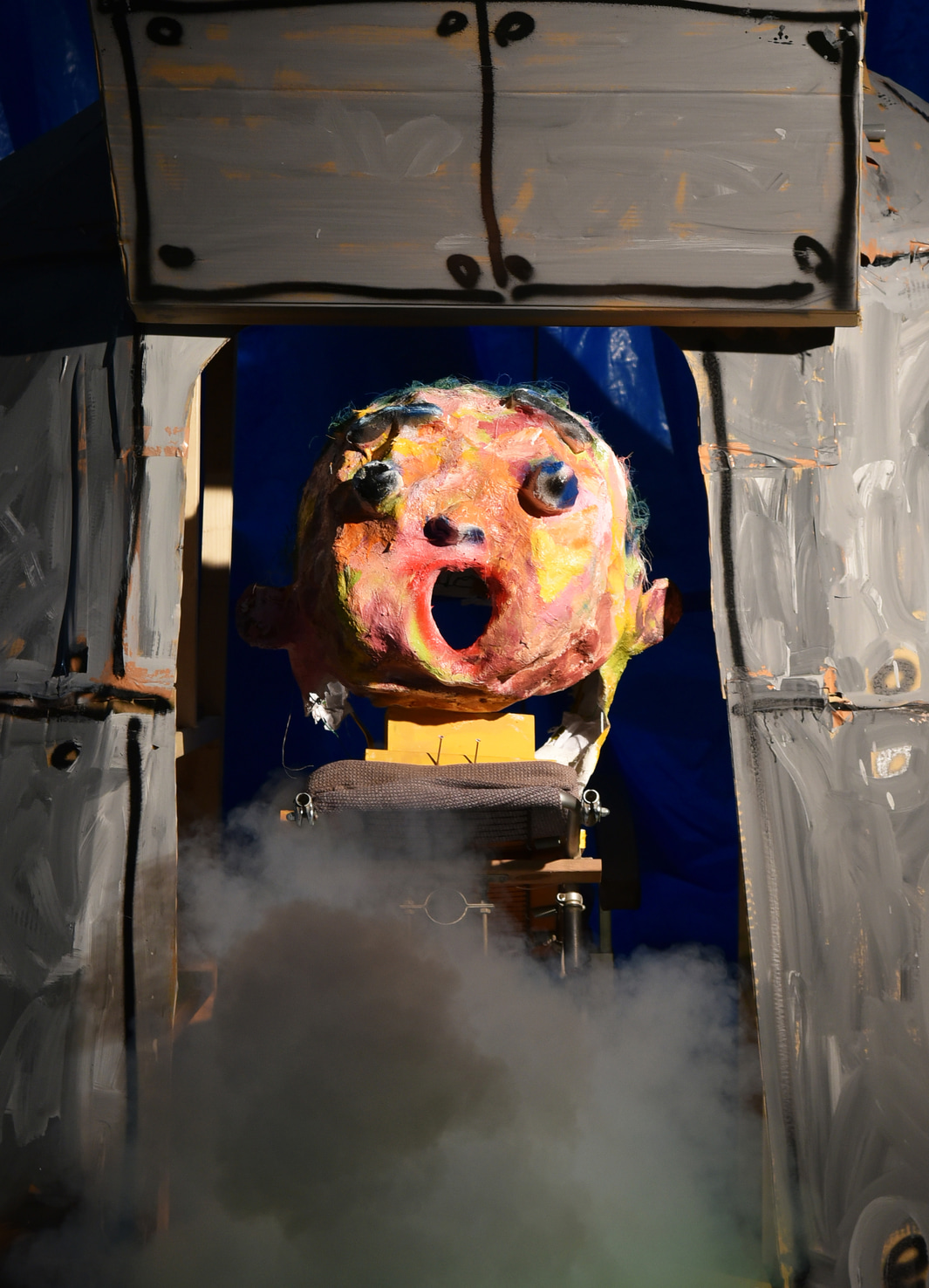
Tomohiro Nagahata, Baby Oil On Canvas
6. Tomohiro Nagahata: Baby Oil On Canvas
It’s difficult to describe the work of Tomohiro Nagahata, but this solo exhibition will prompt you to search for the words. Delightful, grotesque, hellish, squishy or possibly cartoon-like may come to mind. Working in and between sculpture, painting and manga, the artist, in all his esotericism, pulls together many puns and subcultural references in presenting his elaborate structures. You might liken them to the old, bizarre drawings of visionary architecture and quasi-scientific machines.
You might also draw the similarities with claymation and perhaps Jack Stauber’s cute and harrowing music videos. But Nagahata continues to challenge our aesthetic and cultural tastes, embracing the mantra of “Feel before you think.” For this exhibition, he will introduce a video showing a family pulled into the sculpture-making process, demonstrating it as an interactive, warm and social medium.
When: Until Oct 17
Where: Loko Gallery, 12-6 Uguisudani-cho, Shibuya-ku
本日9:45~の #日曜美術館 #アートシーン にて「イラストレーター 安西水丸展」をご紹介いただきました。
再放送は、本日(7月11日)20:45~21:00、Eテレです。番組後半に5分間近く取り上げていただいています。ぜひご覧ください。#みずまるせたぶん #安西水丸 #世田谷文学館https://t.co/GyTkfB0gno— 世田谷文学館 (@SETABUN) July 11, 2021
7. The Work of Illustrator Anzai Mizumaru
Like many Showa-era illustrators, Anzai Mizumaru was a polymath, making manga, novels, picture books, essays and ads. While he was a “commercial” artist as an employee of an advertising agency and publishing company, he also contributed greatly to Japan’s underground scene. He submitted his comic “The Age of Blue” to Garo, a cult favorite and leader among Japanese underground manga.
After becoming independent, Mizumaru worked in bookbinding for Haruki Murakami (the two men were incredibly close). He also contributed to Makoto Wada’s exhibitions and painted for children’s books. This was all in his pursuit of “a picture only the artist can draw” – ordinary objects and scenes captured with the sadness, placidness and deep appreciation special to an artistic sensibility. A special section will feature original paintings, manuscripts, local toys and folk artifacts from his travels down south.
When: Until Sept 20
Where: Setagaya Literary Museum, 1-10-10 Minami-Karasuyama, Setagaya-ku
Featured image: Tomohiro Nagahata, 3M Freestyle, 2021, iron, plaster and styrofoam, 30 x 35 x 40 cm
Updated On September 1, 2021

